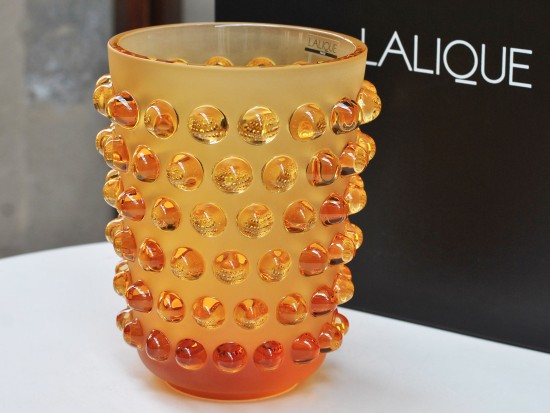
Menu



The kaleidoscopic effect of the Mossi vase is both a stroke of creative genius and a feat of technical mastery.
René Lalique designed this centerpiece in 1933; the material originally chosen was simple glass, which the company transformed into the vibrant intensity of crystal.
A true complement to modernity, the Mossi plays on the contrast between the brilliance of its cabochons and the frosting of its base.